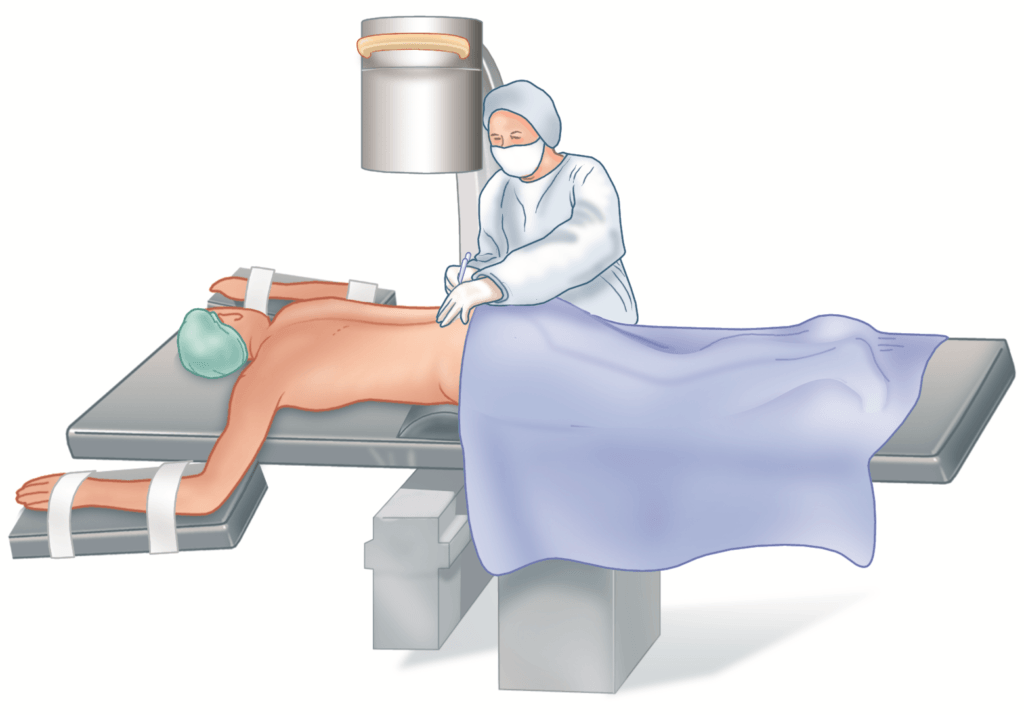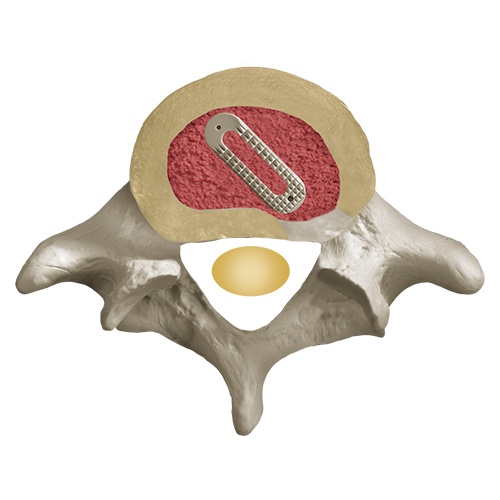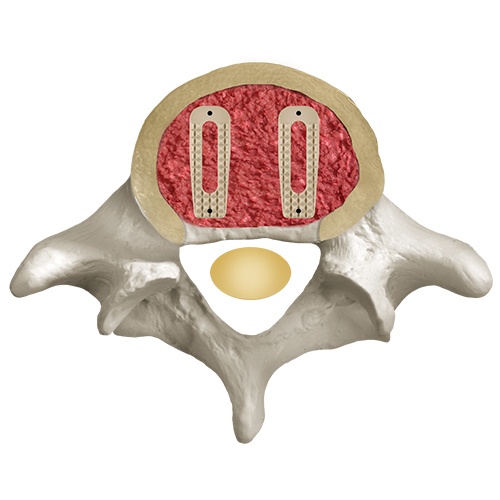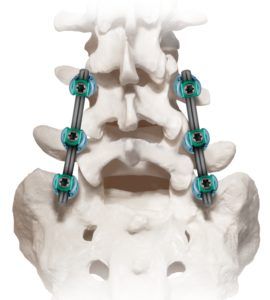Posterior Lumbar Interbody Fusion

What is a posterior lumbar interbody fusion (PLIF)?
The primary goal of a posterior lumbar interbody fusion is to relieve pressure on either the nerve roots or spinal cord and/or treat an unhealthy disc in the lumbar spine using a surgical approach through the back of the body. This procedure is used to promote fusion between the vertebrae.
How is a PLIF performed?
During surgery the patient lies face down. The surgeon makes an incision in the skin on the back over the vertebra(e) to be treated.

Posterior approach to the spine
A section of the bone and disc are removed. Following removal of the disc, an interbody spacer is inserted into the disc space to support the vertebrae where the disc was removed. The spacer and surrounding area is packed with bone graft material to help promote bone growth between the adjacent vertebrae.
The spacer functions to stabilize the segment and to improve overall alignment of the spine. The spacer may increase disc height and provide more room for the nerves.
The spacers may be inserted through various surgical approaches. In a transforaminal approach, the spine is accessed from one side of the back and in a posterior approach, the spine is accessed from the middle of the back.

Transforaminal approach

Posterior approach
Screws and rods are used to hold the vertebrae in place while fusion occurs. The screws are inserted into the left and right sides of the vertebrae to be fused. A rod connects the screws to stabilize the spine on each side. Caps secure each rod to the screws. Bone graft may be added along the side of the vertebrae to help with fusion.

Once the surgery is complete, the surgeon closes the incision and moves the patient into recovery.
Frequently Asked Questions about PLIF
What Can I Expect from Surgery?
Treatment with posterior lumbar fusion may help you return to normal activities. Between two to four weeks after surgery, patients may notice improvement of some or all symptoms and reduced postoperative pain. Recovery time varies between patients. It is the surgeon’s goal for the patient to eventually return to his/her preoperative activities. A positive attitude, reasonable expectations, and compliance with your doctor’s post-surgical instructions may all contribute to a satisfactory outcome.
When Will I Be Able to Return to Work?
The amount of recovery time needed prior to returning to work varies depending on the surgery, your job, and you as an individual. Please consult your surgeon for an individual recommendation.
Disclaimer:
The material on this website is intended to be an educational resource only and is not meant to be a warranty or to replace a conversation between a patient and their physician or member of their health care team. Please consult a physician for a complete list of indications, contraindications, precautions, warnings, clinical results and other important medical information that pertains to this procedure. The decision to receive medical treatment is individualized to the patient and the patient’s symptoms. The information presented on this site may not apply to your condition, treatment or its outcome, as surgical techniques vary and complications can occur. It is important to discuss the viability of any surgical procedure with a physician to decide the right treatment option.
